 It was a lovely day. We needed to get out and about… get some exercise in the fresh air and sunshine. And yet, there we were in lockdown again. My own village offers few unexplored possibilities, so, instead of moping around indoors, we decided to drive five miles and a couple of hamlets over to the village of Whitchurch for a wander.
It was a lovely day. We needed to get out and about… get some exercise in the fresh air and sunshine. And yet, there we were in lockdown again. My own village offers few unexplored possibilities, so, instead of moping around indoors, we decided to drive five miles and a couple of hamlets over to the village of Whitchurch for a wander.

It is often the way that the things on our doorstep are the easiest to ignore. We are always ‘going to’ investigate and seldom do. I have known about the sites at Whitchurch for over twenty years, but aside from visiting the church as we researched the area for our books, I have not taken the time to explore the village. A quiet Sunday, with few people about, seemed the perfect opportunity.

I have already written about the wartime connections of the village… of the young artist, Rex Whistler, who painted the Vale from his garden and was killed in action during WWII. Of Jan Struther, who wrote of Mrs Miniver, a fictional housewife whose story helped bring America into the war, and of the secretive Ministry of Defence offices at The Firs, known as ‘Churchill’s Toybox’, where experimental weapons were developed. But the history of Whitchurch goes back much further than a mere hundred years. Although the original settlement appears to have begun in Anglo-Saxon times, like so many of the villages in the area, what chiefly remains in Whitchurch is mediaeval… and we were on the hunt for sacred springs, holy wells and a castle.

Whittle Hole as the first of the springs to present itself. Vast quantities of crystal clear water… up to a hundred gallons a minute in a wet season, we are told, flow into a wide and fairly practical stone trough, before dropping to the stream below. This water, according to Joseph Holloway, lecturing in 1889, was not held to be as sacred as that of the other three wells in the village, but was nonetheless “blest and given to and for the free and good use of the inhabitants.” It is said that, no matter what the season or weather, these springs have never dried up or foundered.

The two most sacred wells we did not visit on this occasion as it would have involved a fair walk over the fields… and there are limits to what I can do. We do need to try to find them though, as they are both reputed to be petrifying wells, where the contact with water with unusually high mineral content appears to turn objects left within the water to stone. This was once thought to be the result of magic and miraculous and curative powers attributed to the waters, as at Whitchurch Holy Well and the intriguingly named Head Well.

Given all the legends of beheaded saints who have picked up their heads and walked with them until they come to a place where a sacred spring wells from the ground, I have to wonder if there is a missing legend in the area? Or does this hark back to an older veneration such as the so-called Celtic ‘head-worship’?

The fourth well is Fair Alice Well, named for one of the inhabitants of the castle at whose base it rises and who had, perhaps, drunk and been healed by its waters. To be fair, I wasn’t expecting much of the castle. I had never come across any pictures of it… only the legend on a map that proclaims it to be a ‘motte and bailey’, in other words, a couple of hummocks of earth which might be no more than a disturbance in the ground… It was a surprise, then, to find that what remains of Bolebec Castle are two substantial mounds and the very clear course of the castle moat.

The castle was built in during the period known as the Anarchy, a civil war in England and Normandy that took place between 1135 and 1153. Following the drowning of William Adelin, the only legitimate son of Henry I, the succession to the throne was thrown into disarray and widespread lawlessness took over. That there was some controversy over the building of the castle seems clear as in 1147, Pope Eugenius specially referred to castle works with censure as being wrongfully built. It is also quite possible that when Hugh de Bolebec decided to build his castle, he used a pre-existing mound, left behind by the Saxon Thegn ousted by the Norman conquerors. Such mounds might have been part of the area’s defences, or even part of its inner life, used as a ceremonial place, with tendrils of history stretching back beyond memory. What better way for an invader to stamp authority on an area that to take over its heart?

All speculation aside, what remains is impressive enough considering all but the stone footings have long since disappeared. The motte, a huge mound that would have led the stone keep, with its courtyard, lordly housing and drawbridge was surrounded by a moat, doubtless fed by the Fair Alice Spring. The bailey, a secondary mound, now located in a private garden across the lane, would have hosed the horses, livestock and soldiers. It was a really surprising find. Knowing something is ‘there’ is a far cry from walking the ground and seeing it for yourself. I was astonished at how much of the castle’s earthworks were still intact, showing the impressive scale of work.

I caught a waiting buzzard on camera, just before it swooped from the trees…the camera was a good excuse to pause. After a fair walk, a couple of small hills and three stiles, I was struggling a bit with the walking… and we still needed to cross the main road and walk up to the church…








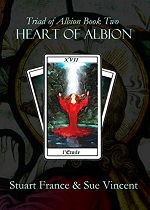






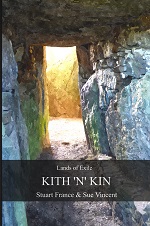


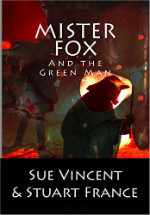



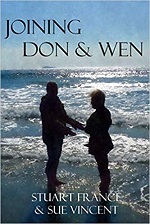

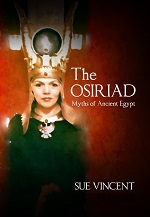










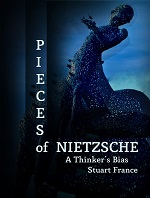
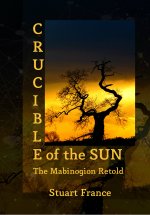


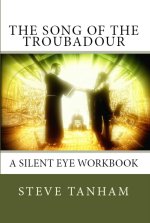


A lovely walk and history lesson 💜
LikeLiked by 3 people
It is surprising what you can find on the doorstep 🙂
LikeLiked by 1 person
Yes indeed it is 💜
LikeLiked by 1 person
🙂
LikeLiked by 1 person
How lovely! It’s so nice to find treasures close to home, isn’t it? 🙂
LikeLiked by 2 people
I just feel a tad guilty we didn’t wander over there before… except for the church 😉
LikeLiked by 1 person
But you’re there now 🙂 Looking forward to hearing what else you’ve discovered…
LikeLike
There was just so much… and we didn’t exhaust the place either!
LikeLiked by 1 person
Well that is intriguing! More exploring to do when this rain lets up I guess?
LikeLike
Perhaps…though some of it involves walking a bit further than I am comfy with at the moment 😉
LikeLiked by 1 person
Yes of course – I appreciate that 🙂 Let’s hope some more doorstep treasures make themselves apparent, then xx
LikeLike
I have a feeling they will. It is about time we looked deeper into some of the places we think we know so well around here 😉 x
LikeLike
So pleased you can still get around, Sue. Walking is so good for so many things, something I should do more often, dodgy knees or no!
LikeLiked by 1 person
It is good for dodgy knees too… but I’d steer clear of the stiles 😉
LikeLike
You bet!
LikeLiked by 1 person
Reblogged this on Anita Dawes & Jaye Marie ~ Authors.
LikeLiked by 1 person
Thank you for sharing, Jaye x
LikeLike
Reblogged I hope? I’m not that far from Whitchurch but we usually just drive round the outskirts. Thank you.
LikeLike
Thanks, Chrisine… though this may not be the same Whitchurch. I think there are eighteen with the same name in the UK… this one is in Buckinghamshire.
LikeLiked by 1 person
Oops! I didn’t realise! Will try and edit my post…. I can’t get the link to work so it might have to be deleted 😢
LikeLiked by 1 person
All sorted! Yes Whitchurch…. Must be based on White Church as a place name?
LikeLike
Apparently even older than that… ‘white chert’, which is ‘white earth’… which could refer to the colour of the soil, but ‘white’ was often used to mean ‘holy’or ‘sacred’ and could indicate a place of spiritual significance.
LikeLike
Very interesting, thank you xxx
LikeLiked by 1 person
Glad to see you are still able to get out and about a bit, even if not far from home. Stay safe. xo
LikeLike
Lockdown keeping us close, sadly, but doorsteps can have so much to offer 😉
LikeLike
Reblogged this on Mallaband-Brown and commented:
Really interesting blog from Sue Vincent. This Whitchurch is in Hampshire. We have one nearby in Shropshire, apparently there are several in the UK. It might be they are based on the name White Church?
LikeLike
🙂
LikeLike
I am so impressd with the way you can see things that other people might just dismiss!
LikeLike
It is all there for the finding 🙂
LikeLike
It looks like you had a lovely day for a bit of exploring, Sue. I’m amazed at how knowledgeable you are and what you can interpret from the land. It’s fascinating.
LikeLike
We were not out all that long… the stiles did for me… but there is so much waiting to be discovered if we take time to look 🙂
LikeLiked by 1 person
Glad you got out to enjoy the beautiful day, Sue. Staying closer to home isn’t such a bad thing– makes me think of the book ‘Acres of Diamonds’… there is treasure in our backyard if we only will look for it. 🙂
LikeLike
With so many villages close to home here…all of whose churches we have documented for the books, and few of which we have actually explored, we should not be stuck for small adventures for a while 🙂
LikeLiked by 1 person
You packed a lot into that visit (not only the walking) – and I’ve just read the next post, too. Don’t know why I’m reading in the wrong order.
LikeLike
There was so much more to uncover in that little village…and we barely scratched the surface either!
LikeLike
You brought together earth and water in a splendid way. A good post!
LikeLike
Thank you 🙂
LikeLiked by 1 person